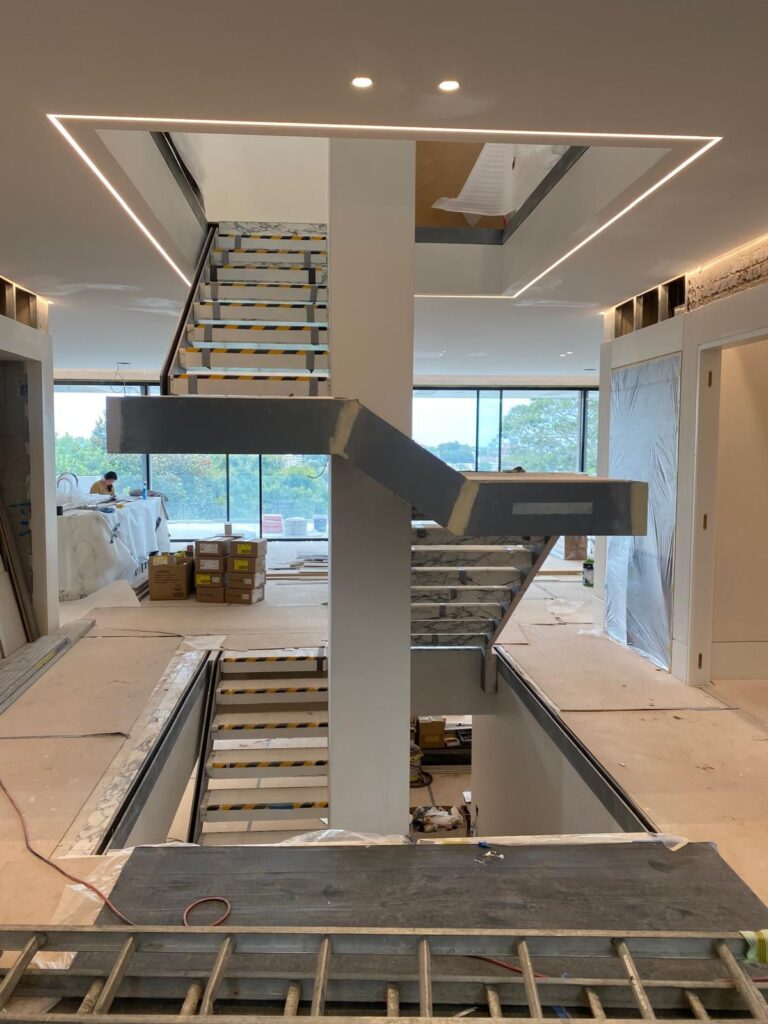How to Prepare a Staircase for Spray Painting | QLD Guide
Preparing a staircase before spray painting is critical for achieving a clean, durable finish. Whether you’re dealing with timber, metal, or steel, the quality of preparation directly affects how well the paint adheres and how long it lasts. Especially in high-traffic areas like staircases, good prep work ensures your investment stands the test of time and looks professional from every angle.
Assessing the Staircase Surface Type
Different materials require specific preparation methods. Timber staircases may need sanding and filling, while steel staircases often need rust treatment and priming. For interior staircase spray painting in QLD, pay close attention to surface smoothness and indoor ventilation. For outdoor jobs like exterior staircase spray painting, weather conditions and surface contaminants like dust or moss need to be addressed beforehand.
Step-by-Step Process for Surface Preparation
Start by clearing the work area—remove furniture, décor, and any obstructions. If the staircase has existing paint, check for peeling or bubbling. Use a scraper to remove any loose sections, followed by sanding to smooth the surface. For steel staircase electrostatic coating, wire brushing or power sanding may be necessary to eliminate rust. Timber surfaces may need wood filler to repair cracks or nail holes.
Once the surface is even, clean it thoroughly with a degreaser or mild detergent. Rinse and allow it to dry completely. If taping is required (for edges, railings, or floor protection), use painter’s tape to mask off sections that shouldn’t be painted. This step is particularly important in stair railing spray painting, where precision is key. Once taped, apply a suitable primer that matches the surface material—metal primers for steel, bonding primers for timber. Let it cure as per manufacturer instructions before beginning the spray painting.
Safety and Ventilation Considerations
Before spray painting begins, ensure proper ventilation—especially for interior jobs. Open windows or use exhaust fans where possible. For commercial staircase spray coating, workers should wear appropriate PPE such as masks, gloves, and protective eyewear. Cover surrounding areas with drop cloths or plastic sheeting to minimise overspray and protect nearby surfaces. It’s also wise to notify household members or staff if you’re working in shared or active spaces.
Common Mistakes to Avoid During Prep
Skipping sanding or cleaning can result in poor adhesion and a blotchy finish. Likewise, painting over rust or unfilled gaps can cause premature peeling or chipping. Always allow adequate drying time between prep stages. Rushing the process or ignoring surface imperfections can lead to costly touch-ups later. It’s also essential to choose a primer compatible with your staircase material to maximise durability.

Preparing Different Staircase Types in QLD
Each staircase type across Queensland has its own preparation demands. For example, residential staircase painting in QLD often involves timber surfaces that need sanding, filling, and dust removal. In contrast, industrial staircase coating involves metal stairs in high-wear settings that demand rust treatment and heavy-duty primers.
Brisbane, Gold Coast, and Ipswich homes commonly feature a mix of timber and steel staircases. For these regions, weather resistance is crucial, making preparation even more important. Proper cleaning, drying, and priming lay the foundation for long-term success, whether you’re preparing for staircase spray painting in Brisbane or a modern fit-out in Toowoomba.
If you’re unsure how to approach the prep process for your unique staircase material, consult with the team at QLD Electrostatic Painters. You can also learn more about their qualifications and experience on the About Us page, or get in touch directly by calling 📞 0493871884 or emailing 📧 [email protected].
FAQs
1. What tools do I need to prepare a staircase for spray painting?
You’ll need sanding tools, scrapers, painter’s tape, drop cloths, a degreasing solution, safety gear, and the appropriate primer. For metal staircases, a wire brush or rust treatment may also be required.
2. Can I skip the primer if the surface looks clean?
No. Primer is essential for proper paint adhesion, especially on metal or previously painted surfaces. It ensures durability and a uniform finish.
3. How long should I wait after cleaning before painting?
Wait until the staircase is completely dry—this could take several hours depending on the material and humidity levels. Any moisture trapped under paint can cause blistering or peeling.
